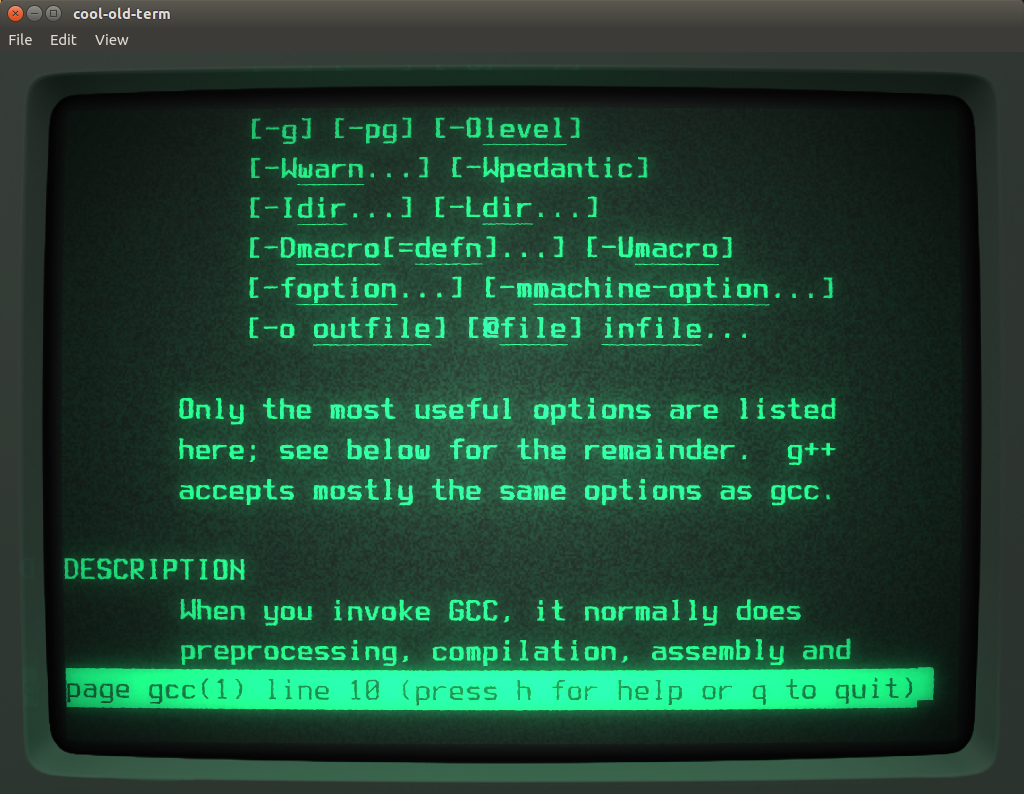

Cool Retro Term Applicationĭo you remember the time when there were CRT monitors everywhere and the terminal screen used to flicker? You don’t need to be old to have witnessed it.

Now you can turn your entire desktop into a replica of an old CRT monitor and attract curious glances from coworkers and passers-by.Nostalgic about the past? Get a slice of the past by installing the retro terminal app cool-retro-term, which, as the name suggests, is both cool and retro at the same time. However, Cool Retro Term takes it a step further and emulates the way they look(ed), too. Great if you want: nostalgia-inducing eye candyĪs we explained previously, Linux terminal emulators mimic the functionality of now-deprecated physical devices. Furthermore, Mlterm supports multiple X Input Method servers, and can automatically detect the necessary encoding for your input. Special features for vertical writing, double-width and combining characters make it possible to use East Asian, Thai, and Vietnamese scripts. Encodings for Indic and Dravidian languages – Hindi, Bengali, Gujarati, Kannada, Punjabi, and more – are also supported. It’s a must-have for anyone who wants to use RTL (right-to-left) languages such as Arabic, Hebrew, and Farsi. Most modern terminal emulators support multiple encodings, but few come close to the amount of languages and writing systems supported by Mlterm. Great if you want: a drop-down terminal with many tab management options

If you’re feeling adventurous, here are 15 best Linux terminal emulators perfectly capable of replacing your current one: 1. While most people will be happy with the default terminal provided by their Linux distribution, some might want to switch things up. The difference is mainly in additional options that you can enable to improve your workflow. Linux terminals are very similar to each other, especially those based on the VTE software library. The majority of Linux terminals emulate the functionality of VTxxx devices developed by DEC (Digital Equipment Corporation), but there are emulators for other devices (IBM, HP, ADDM…). These days, our terminal emulators are just software, but we often use the same word – terminal – for them. They had a keyboard and a screen, and enabled people to interact with the mainframe computers. As you may already know, the word “terminal” used to refer to actual physical devices.


 0 kommentar(er)
0 kommentar(er)
